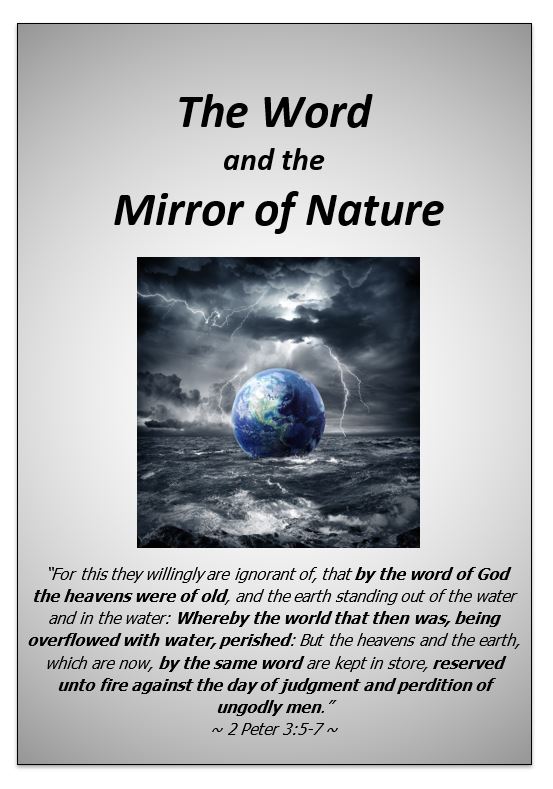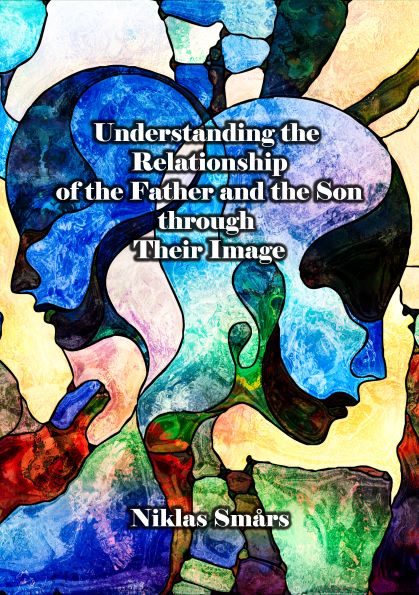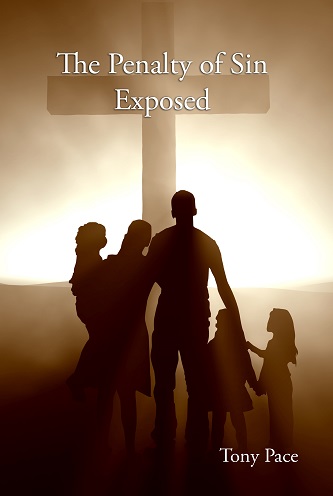19. Using a Relational-Based Underlying Assumption
So let us return to our original Trinitarian premise with a realization that the underlying assumption is false, and actually based on human reasoning flowing from the lie “you shall not surely die”.
Premise: There are three Persons of the Godhead (Partially True).
Hidden/Underlying Assumption: Position of Divinity is only ascribed to Beings of highest inherent power (Totally False).
Since the underlying assumption is totally false this will make the understanding of the premise false and turn the truth of God into a lie. Such a lie will lead us to worshipping the creature more than the Creator (Rom 1:25).
Let us restate the case with a relational underlying assumption:
Premise: There are three Persons of the Godhead (Partially True).
Hidden/Underlying Assumption: Positions of Divinity are only ascribed by the Father through relational inheritance (True).
In this scenario it is God who determines who and how someone or something is Divine. It is His right alone to determine this, man has no right to impose his ideas of Divinity onto God. Such imposition is suggestive of idolatry.
Notice the following statement:
“In these words is set forth the great principle which is the law of life for the universe. All things Christ received from God, but He took to give. So in the heavenly courts, in His ministry for all created beings: through the beloved Son, the Father's life flows out to all; through the Son it returns, in praise and joyous service, a tide of love, to the great Source of all. And thus through Christ the circuit of beneficence is complete, representing the character of the great Giver, the law of life.” DA 21
This statement makes complete sense based on our new underlying assumption. The Father is the fountain of life (Jer 2:13). This life flows out of the Father and through the Son and out to the universe. This is clearly revealed in 1 Cor 8:6.
1Co 8:6 But to us there is but one God, the Father, of whom are all things, and we in him; and one Lord Jesus Christ, by whom are all things, and we by him.
When we compare the above passage with another in Ephesians, the picture is even clearer
Eph 4:4-6 There is one body and one Spirit, just as you were called in one hope of your calling; 5 one Lord, one faith, one baptism; 6 one God and Father of all, who is above all, and through all, and in you all.
The one God is clearly the Father and the one Lord is Jesus Christ. Some have tried to refute this by claiming that if Jesus is the one Lord, then the Father is excluded from being Lord. Again this reasoning is based on independent inherent life source thinking. Jesus is Lord because Lordship came from the Father. The Son inherited this Lordship and executes this office on behalf of the Father. To try and show a co-eternal Trinity from the above verses creates confusion and unfaithfulness to the text.
A passage that is often used to show Christ is completely separate from the Father is this:
“In Him was life, original, unborrowed, underived. This life is not inherent in man. He can possess it only through Christ. He cannot earn it; it is given him as a free gift if he will believe in Christ as His personal Saviour. "This is life eternal, that they might know thee the only true God, and Jesus Christ, whom thou hast sent" (John 17:3). This is the open fountain of life for the world.” 1SM 296
My previous understanding of the passage above was that Christ had life separate from the Father. The terms “life original, unborrowed and underived” seemed quite conclusive, but in the past my underlying assumption was hidden. I interpreted this passage through the lens of self-originating inherent power rather than relational inherent power.
Notice how it says that IN Christ WAS life original, unborrowed and underived but it does not say how that Life got there. Since it does not tell us how it got there, our underlying assumption is immediately revealed as to how we will understand it came to be there. Putting it another way, the words “original, unborrowed and underived” will either have a performance-based or a relationship-based assumption attached to them. If we adopt a performance-based approach then this passage will certainly demand that Christ has originated a second and separate life source to the Father. If we adopt a relational model then the life flowing from Father to Son is maintained as original, unborrowed and underived because they share it in the intimacy and oneness of their relationship. This becomes a statement of the closeness of the relationship of Father and Son and the fullness with which the Father has given the Son. Again, remember that Ellen White did not say “Christ originated in and of Himself, separate to the Father, life original, unborrowed and underived, it simply says that “IN Christ was Life original, unborrowed and underived” We must not read into the passage a false underlying assumption.
John 5:26 tells us – As the Father has life (original, unborrowed and underived) so He gave to the Son to have life (original, unborrowed and underived) in Himself. So it is inherent in Christ, but the Father gave it to Him as part of His inheritance. We don’t have it inherently, but we can receive it from the fountain of life through a relationship with Christ. This is exactly what Ellen White says. What a wonderful statement.[1]
Again this truth is brought forth in the following statement:
The King of the universe summoned the heavenly hosts before Him, that in their presence He might set forth the true position of His Son and show the relation He sustained to all created beings. The Son of God shared the Father's throne, and the glory of the eternal, self-existent One encircled both. PP 36
This statement speaks of the Father setting forth the true position of His Son and show the relation He sustained to all created beings. This must surely then present who the Son of God really is. Here is the point where Ellen White must mention the counsel of the three members and the roles that they took to display the love of God. But none of this is mentioned. Rather, Ellen White makes the unmistakable comment that “The Son of God shared the Father's throne, and the glory of the eternal, self-existent One encircled both.” Surely the self-existent One must refer to the Father and that the glory of the Father encircled the Son, meaning, that to the Son was given Life as the Father has Life. There is no other possible way to read these statements.
But in this context Ellen White makes more statements that cannot possible align with a co-equal Trinity. She continues:
Before the assembled inhabitants of heaven the King declared that none but Christ, the Only Begotten of God, could fully enter into His purposes, and to Him it was committed to execute the mighty counsels of His will. PP 36
Christ is referred to as the Only Begotten of God in the context of what transpired before the creation of the world. She then states that Christ alone could fully enter into His purposes. These statements were penned in 1890. They are post 1888 and are clearly not Trinitarian. There never has been an attempt to correct or alter them or confess that these statements are wrong. The honest and candid reader cannot honestly read these statements and believe that Ellen was moving towards a Trinitarian belief. Such a view is ignorant at best and deceitful at worst.
Returning to the statement concerning life unborrowed and underived; some have claimed, as I have in the past, that because this statement converted M.L Andreasen from being a Pioneer-based Godhead believer to a Trinitarian, it must indeed be a Trinitarian statement. Andreasen went all the way to visit her to check if she actually wrote this statement and spent three weeks in her home checking its truthfulness. But can we use Andreasen’s conversion as the basis of what Ellen White meant. If she did tell Andreasen that she meant it in a Trinitarian context and was herself a Trinitarian then she must have forgotten to tell her son (who spent much more time with his mother than Andreasen) that she thought this way. In 1935 Willie White wrote:
“In your letter you request me to tell you what I understand to be my mother’s position in reference to the personality of the Holy Spirit. This I cannot do because I never clearly understood her teachings on the matter. There always was in my mind some perplexity regarding the meaning of her utterances which to my superficial manner of thinking seemed to be somewhat confusing. I have often regretted that I did not possess that keenness of mind that could solve this and similar perplexities, and then remembering what Sister White wrote in ‘Acts of the Apostles,’ pages 51 and 52, ‘regarding such mysteries which are too deep for human understanding, silence is golden,’ I have thought best to refrain from discussion and have endeavored to direct my mind to matters easy to be understood. As I read the Bible, I find that the risen Saviour breathed on the disciples ‘and saith unto them, Receive ye the Holy Ghost.’ The conception received from this Scripture, seems to be in harmony with the statement in ‘Desire of Ages’, page 669, also Gen. 1:2; with Luke 1:4; with Acts 2:4 and also 8:15 and 10:44. Many other texts might be referred to which seem to be in harmony with this statement in ‘Desire of Ages.’ The statements and the arguments of some of our ministers, in their effort to prove that the Holy Spirit is an individual as are God the Father and Christ, the eternal Son, have perplexed me, and sometimes they have made me sad. One popular teacher said ‘We may regard Him, as the fellow who is down here running things.’ My perplexities were lessened a little when I learned from the dictionary that one of the meanings of personality, was characteristics. It is stated in such a way that I concluded that there might be personality without bodily form which is possessed by the Father and the Son. There are many Scriptures which speak of the Father and the Son and the absence of Scripture making similar reference to the united work of the Father and the Holy Spirit or of Christ and the Holy Spirit, has led me to believe that the spirit without individuality was the representative of the Father and the Son throughout the universe, and it was through the Holy Spirit that they dwell in our hearts and make us one with the Father and with the Son.” {Letter, W. C. White to H. W. Carr, April 30, 1935}
Clearly Willie White did not believe in the Trinity of three co-equal and three co-eternal beings. To use Andreasen’s conversion to Trinitarianism as a proof that Ellen White meant the statement “original, unborrowed and underived” to be seen as a Trinitarian statement would be unwise, as there is no place where Andreasen states that “Ellen White told me she was a Trinitarian and so I converted”.
As we have done above, when we look at statements that appear to place Christ as co-equal and co-eternal with a separate life source, we need to question “what is our underlying assumption?” Is it self-originating-inherent-power-based or relational-inheritance-based?
Most of our problem passages of Scripture and E.G.W. quotes are solved when we do this, and we can read them in the plainest and most universal context. This in itself is a principle of Bible study that all should remember.
The framework of understanding that allows for the plainest reading of Scripture and most universal application is the more correct position.
The Trinitarian position requires us to narrow passages and regularly assign symbolic meanings to texts to make them fit. Some examples:
- Restricting Prov 8 to the personification of wisdom.
- Restricting the term begotten to the incarnation.
- Restricting the passage John 5:26 that Christ was given life in Himself to the incarnation.
- Using the term one in a symbolic rather than literal sense.
- Seeing the roles of Father and Son as more symbolic than a more literal sense.
The same principles are used by Sunday keepers in refuting the Sabbath:
- Restricting the keeping of the Ten Commandments to the Old Testament.
- Seeing the Sabbath rest as merely symbolic rather than including the literal sense.
- Limiting grace to forgiveness and denying the victorious Christian life.
Can we not have the whole Bible without all these limits and restrictions being placed upon it because of the lie of the serpent? Man can only live by EVERY WORD OF GOD, not small sections of it based on fatal assumptions.
When we allow the Bible to read plainly in a relationship-based context, it is quite natural to allow the Son to literally be the only begotten Son of God. It is such an understanding that can only make sense of the following statement from Ellen White:
"The Lord Jesus Christ, the only begotten Son of the Father, is truly God in infinity, but not in personality." UL 367
This statement cannot be understood in performance-based context. To do so is to believe that Jesus Christ is not truly God. A performance-based context demands that Christ is equal to the Father in every facet and in every sense. A relational-based system does not require this and frees us from the twisting of scripture required to maintain co-equality.
Having accepted that the Son is the only-begotten of the Father leads us to the question of how we then understand the Holy Spirit, how would He fit into a view where Christ is literally the only-begotten Son of the Father? We will examine this in detail in chapter 21, but before that I want to examine some of the reasons why a literally begotten Son is not easy for human beings to accept.
[1] This same principle applies to the concept of wisdom. Some argue that if Christ is begotten and that Christ is wisdom then God was not wise until Christ was begotten. This argument denies the flow of blessing from the Father to the Son. To bring forth wisdom requires the one who brings it forth to possess it Himself. The Son is the pinnacle of wisdom because He is the highest expression of the wisdom of God in establishing His kingdom.




